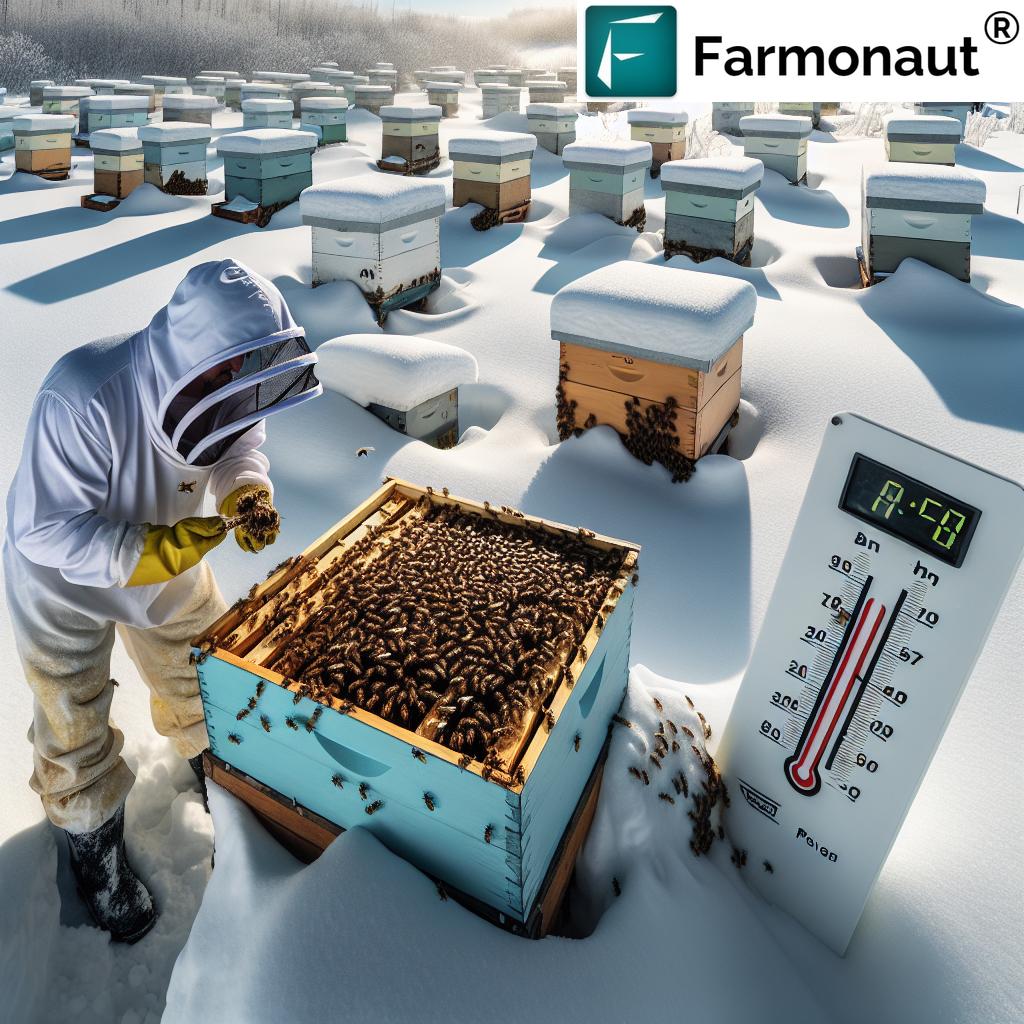Saskatchewan’s Global Summit: Unveiling Agricultural Opportunities Amid Economic Volatility
“Saskatchewan’s Global Trade Summit in Regina attracted over 500 industry leaders, policymakers, and entrepreneurs from 20 countries.”
In the heart of Canada’s prairies, a remarkable gathering took place that promises to reshape the landscape of North American agriculture and commerce. The recent Global Trade Summit in Regina, Saskatchewan, stood as a beacon of hope and innovation amidst the swirling tides of economic uncertainty. As we delve into the outcomes and insights from this pivotal event, we’ll explore how Saskatchewan is not just weathering the storm of global volatility but harnessing its energy to propel the province—and indeed, the entire nation—toward a future brimming with opportunity.
Setting the Stage: Saskatchewan’s Agricultural Prowess
Before we dive into the summit’s revelations, it’s crucial to understand why Saskatchewan stands at the forefront of agricultural innovation. Our province, often referred to as Canada’s breadbasket, boasts vast expanses of fertile land that have long been the backbone of the nation’s food production. But in today’s rapidly evolving global market, it’s not just our natural resources that set us apart—it’s our forward-thinking approach to farming and agribusiness.
Saskatchewan has consistently demonstrated its ability to adapt and thrive in the face of challenges. From embracing precision agriculture technologies to pioneering sustainable farming practices, we’ve shown that our agricultural sector is anything but static. It’s this spirit of innovation and resilience that took center stage at the Global Trade Summit.

The Summit: A Confluence of Minds and Markets
The Food, Fuel and Fertilizer Global Summit, organized by the Saskatchewan Chamber of Commerce, brought together a diverse array of stakeholders. From local farmers to international trade experts, the event was a melting pot of ideas and strategies aimed at navigating the complex waters of global commerce.
“The summit focused on 4 key areas: trade, infrastructure, energy, and food security, positioning Saskatchewan as a leader in North America.”
What set this summit apart was its focus on solutions rather than problems. While the specter of tariffs and trade disputes loomed large, the prevailing mood was one of quiet confidence. Presenters and attendees alike approached these challenges not as insurmountable obstacles but as catalysts for innovation and growth.
Embracing Volatility: The Saskatchewan Advantage
One of the most striking themes to emerge from the summit was the notion that economic volatility, far from being a purely negative force, can be a powerful driver of progress. Kristjan Hebert, a prominent farmer from the Moosomin area, encapsulated this sentiment perfectly when he stated, “Volatility creates opportunity. If everything was the same, life would suck… It’s the volatility that creates the opportunity.”
This perspective is quintessentially Saskatchewan. Our province has a long history of turning challenges into opportunities, and the current economic climate is no exception. By embracing uncertainty and viewing it through the lens of potential, we’re positioning ourselves to not just survive but thrive in an ever-changing global marketplace.
Collaborative Spirit: The Key to Unlocking Potential
Another crucial insight from the summit was the emphasis on collaboration. In a world where economic borders are increasingly fluid, the ability to forge strong partnerships across sectors and nations is more important than ever. The event showcased Saskatchewan’s unique talent for bringing diverse stakeholders together to work towards common goals.
Prabha Ramaswamy, Chief Executive Officer of the Saskatchewan Chamber of Commerce, highlighted this collaborative spirit: “We all need to come together and we need to lead together, whether that’s cross-sector, industry leaders, policy makers. They were all in the room together and really wanted to foster collaboration.”
This approach to problem-solving and innovation is what sets Saskatchewan apart. By breaking down silos and encouraging cross-pollination of ideas, we’re creating an environment where creative solutions can flourish.
Technology and Innovation: Driving Saskatchewan’s Agricultural Future
As we look to the future of agriculture in Saskatchewan and beyond, technology plays a pivotal role. The summit highlighted several key areas where technological innovation is reshaping the industry:
- Precision Agriculture: Leveraging data and satellite technology to optimize crop yields and resource use.
- Sustainable Farming Practices: Implementing techniques that balance productivity with environmental stewardship.
- Supply Chain Innovation: Utilizing blockchain and other technologies to enhance traceability and efficiency.
- Climate-Smart Agriculture: Developing strategies to adapt to and mitigate the effects of climate change.
In this context, companies like Farmonaut are at the forefront of agricultural innovation. By providing farmers with advanced satellite-based farm management solutions, Farmonaut is empowering agriculturists to make data-driven decisions that optimize yields while minimizing environmental impact. Their crop plantation and forest advisory services are particularly relevant for Saskatchewan’s diverse agricultural landscape, offering tailored insights that can help farmers navigate the challenges of a changing climate.
Market Diversification: A Strategic Imperative
One of the key strategies discussed at the summit was the importance of market diversification. In an era of shifting trade relationships and geopolitical tensions, relying too heavily on any single market can leave businesses vulnerable to sudden disruptions. Saskatchewan’s agricultural sector is actively exploring new markets and strengthening existing relationships to ensure resilience in the face of global economic shifts.
This approach aligns perfectly with technologies like Farmonaut’s blockchain-based traceability solutions. By providing transparent, verifiable data on product origins and journey, these tools can help Saskatchewan’s agricultural products stand out in new markets, building trust with consumers and regulators alike.
Saskatchewan’s Role in Canada’s Economic Future
The summit underscored Saskatchewan’s critical role in securing Canada’s place in the global economy. As a leader in food, fuel, and fertilizer production, our province is uniquely positioned to drive economic growth and innovation on a national scale. The discussions at the event highlighted several key areas where Saskatchewan’s strengths align with Canada’s economic priorities:
- Food Security: As global population growth continues to drive demand for agricultural products, Saskatchewan’s vast agricultural resources and innovative farming practices position us as a key player in ensuring food security both domestically and internationally.
- Clean Energy: With a growing focus on sustainable energy sources, Saskatchewan’s research into biofuels and other renewable energy technologies could play a crucial role in Canada’s transition to a greener economy.
- Resource Management: Our expertise in efficient resource management, particularly in water and soil conservation, offers valuable lessons for sustainable development across the country.
These strengths are further enhanced by technological solutions like Farmonaut’s carbon footprinting tools, which allow agribusinesses to monitor and reduce their environmental impact. As sustainability becomes increasingly important in global trade, such technologies position Saskatchewan’s agricultural sector at the forefront of eco-friendly production.
Navigating Economic Challenges: The Saskatchewan Way
While the summit painted an optimistic picture of Saskatchewan’s future, it didn’t shy away from addressing the very real challenges facing our economy. The ongoing volatility in global trade, particularly with regards to tariffs imposed by major trading partners like the USA and China, presents significant hurdles for our export-driven agricultural sector.
However, true to form, the Saskatchewan approach to these challenges is one of pragmatic optimism. As one presenter noted, “Ten years from now, we’ll look back on this time and say that this six to 12 months of volatility might have been one of the best things for the North American economy. It forced us to look at things, what can we do differently, what have we done right, what do we need to multiply, who do we need for new friends, and who do we need to continue to get along with.”
This forward-thinking attitude is driving innovation across the sector. For instance, Farmonaut’s fleet management solutions are helping agribusinesses optimize their operations and reduce costs, a crucial advantage in navigating economic uncertainties. By embracing such technologies, Saskatchewan’s agricultural businesses are turning challenges into opportunities for growth and efficiency.

The Road Ahead: Policy Alignment and Cross-Sector Collaboration
As we look to the future, the summit emphasized the importance of policy alignment and cross-sector collaboration in realizing Saskatchewan’s economic potential. The complex challenges facing our agricultural sector—from climate change to shifting global trade dynamics—require coordinated efforts from government, industry, and academia.
The Saskatchewan Chamber of Commerce’s commitment to producing a post-event policy report with calls to action and recommendations is a significant step in this direction. By providing a roadmap for policymakers and industry leaders, this report will help ensure that the insights and strategies discussed at the summit translate into concrete actions.
Moreover, the emphasis on cross-sector collaboration opens up exciting possibilities for innovation. For example, Farmonaut’s crop loan and insurance solutions demonstrate how technology can bridge the gap between agriculture and finance, providing farmers with easier access to credit and insurers with more accurate risk assessments. Such collaborations will be crucial in building a resilient and innovative agricultural sector.
Saskatchewan’s Agricultural Opportunities Amid Economic Volatility
| Agricultural Sector | Current Market Position | Growth Opportunities | Economic Challenges | Innovation Potential | Global Market Impact |
|---|---|---|---|---|---|
| Crops | 80% market share | Emerging markets in Asia | Climate volatility | High (precision agriculture) | Strong exporter |
| Livestock | 65% market share | Sustainable meat production | Trade barriers | Medium (genetic improvements) | Growing demand |
| Agtech | 40% market share | AI and IoT integration | Adoption rates | Very High (data-driven farming) | Emerging leader |
| Biofuels | 55% market share | Clean energy transition | Policy uncertainty | High (new feedstocks) | Potential major player |
Empowering Farmers with Technology
As we’ve seen throughout the summit discussions, technology plays a crucial role in shaping the future of Saskatchewan’s agriculture. Platforms like Farmonaut are at the forefront of this technological revolution, offering farmers powerful tools to optimize their operations and navigate the challenges of modern agriculture.
Farmonaut’s suite of solutions, accessible via web, Android, and iOS applications, provides farmers with real-time insights into their crop health, weather patterns, and resource management. By leveraging satellite imagery and advanced AI algorithms, these tools enable farmers to make data-driven decisions that can significantly improve yields while reducing environmental impact.
For those interested in exploring how Farmonaut can benefit their farming operations, here are quick links to get started:
For developers and businesses looking to integrate Farmonaut’s powerful satellite and weather data into their own systems, the Farmonaut API offers a wealth of possibilities. Detailed documentation is available in the API Developer Docs.
Conclusion: Saskatchewan’s Bright Agricultural Future
As we reflect on the insights and strategies discussed at the Global Trade Summit in Regina, it’s clear that Saskatchewan’s agricultural sector is poised for a future of innovation, growth, and global leadership. By embracing volatility as an opportunity for change, fostering collaboration across sectors, and leveraging cutting-edge technologies, we’re not just adapting to the challenges of a rapidly evolving global economy—we’re actively shaping it.
The summit has reinforced Saskatchewan’s position as a key player in Canada’s economic future, particularly in the realms of food security, sustainable energy, and resource management. Our province’s unique blend of natural resources, innovative spirit, and collaborative approach positions us perfectly to lead the way in addressing some of the most pressing challenges facing global agriculture.
As we move forward, the strategies and insights gained from this summit will undoubtedly play a crucial role in guiding policy decisions, industry initiatives, and technological innovations. By continuing to foster an environment of open dialogue, cross-sector collaboration, and forward-thinking problem-solving, Saskatchewan is setting the stage for a new era of agricultural excellence that will benefit not just our province, but the entire world.
The road ahead may be marked by challenges and uncertainties, but as the Global Trade Summit has shown, Saskatchewan is more than ready to meet these challenges head-on. With our resilient spirit, innovative mindset, and commitment to sustainable growth, we’re not just preparing for the future of agriculture—we’re actively creating it.
FAQs
- What were the main themes of Saskatchewan’s Global Trade Summit?
The summit focused on trade, infrastructure, energy, and food security, emphasizing opportunities amid economic volatility and the importance of collaboration across sectors. - How is Saskatchewan positioning itself in the global agricultural market?
Saskatchewan is leveraging its natural resources, embracing technological innovation, and focusing on sustainable practices to become a leader in food, fuel, and fertilizer production. - What role does technology play in Saskatchewan’s agricultural future?
Technology, including precision agriculture tools, satellite monitoring, and AI-driven insights, is crucial for optimizing crop yields, managing resources efficiently, and adapting to climate challenges. - How is Saskatchewan addressing the challenges of economic volatility?
The province is focusing on market diversification, fostering innovation, and promoting cross-sector collaboration to turn economic challenges into opportunities for growth. - What are some key strategies for Saskatchewan’s agricultural sector moving forward?
Key strategies include embracing technological innovation, fostering international partnerships, focusing on sustainable practices, and aligning policies to support agricultural growth and innovation.
Earn With Farmonaut: Affiliate Program
Earn 20% recurring commission with Farmonaut’s affiliate program by sharing your promo code and helping farmers save 10%. Onboard 10 Elite farmers monthly to earn a minimum of $148,000 annually—start now and grow your income!
Farmonaut Subscriptions
















